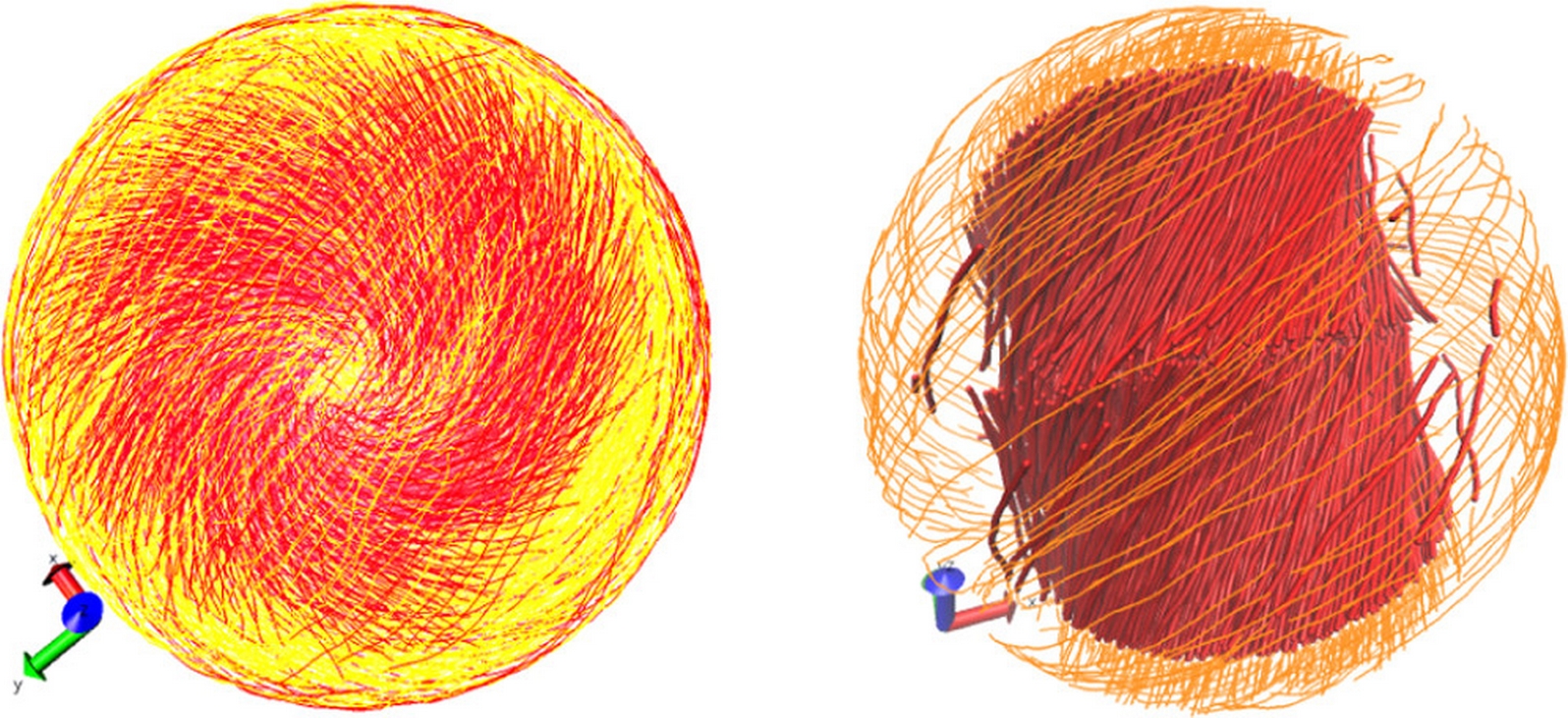Lyotropic solutions containing two types of semiflexible macromolecules in spherical confinement are studied by molecular dynamics simulations and density functional theory, using a coarse-grained model. The case of strong stiffness disparity between both types of polymers is treated, and for simplicity, we take the contour lengths of both types of polymers to be equal. Only sphere radii larger than this contour length are considered, so that many chains can be packed inside the sphere, even when the chains are stretched out in a nematic state. For the chosen polymer solution, in the bulk one finds with increasing monomer concentration a transition from an isotropic phase through an isotropic–nematic two-phase region to a homogeneous nematic phase to which both constituents contribute. In the corresponding confined systems, there is an interplay between these phase transitions and surface enrichment of one component (typically, but not always, the stiffer one). In rather dilute confined solutions, the main effect of the surfaces is that the random orientation of the end-to-end vectors of the stiff chains is perturbed in a surface shell whose thickness is roughly the contour length. In more concentrated systems, a thin layer of wall-attached stiff chains is observed in addition, while (for equal mole fractions of both constituents) the stiffer component can also form an almost cylindrical domain with a bipolar orientational order, surrounded in the remainder of the sphere by the less stiff component. Topological defects in the nematic order can be identified, similar to the case where a single type of semiflexible polymer is confined in a sphere. The radial profiles of monomer concentrations and of various order parameters are compared to analogous data near planar and cylindrical repulsive walls, to provide a comprehensive picture of confinement effects on such polymer solutions.
Download a copy of the manuscript (preprint version)

